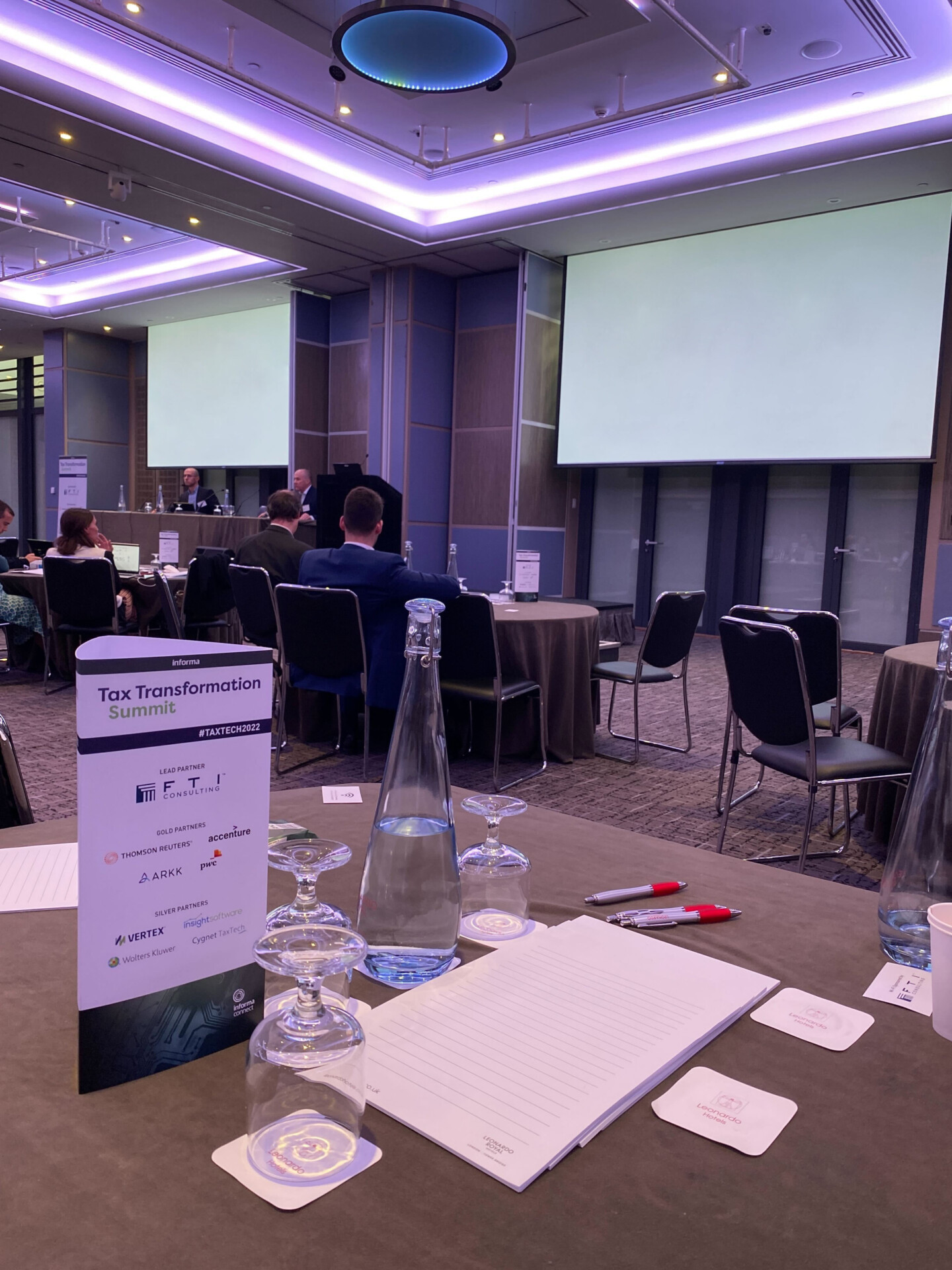Earlier this year, our customer success manager Maija Arimo visited the Tax Transformation Summit 2022 and shared her observations from the event and discussions with the community.

In-house experts, advisors, and vendors gathered together for two days in London to discuss the recent trends in tax technology and hear about the latest innovations and international landscape of technological solutions for tax. After two days of great panel discussions and presentations on automation, tax technology architecture, business insights, and value chain optimization, the message was clear: it's all about the data.
The quality of data and data processes is crucial for benefitting from advanced tax technologies. The biggest challenges MNEs are facing are related to data, and the one thing everyone seems to yearn for is "the single source of truth". A large multinational might have dozens, or hundreds of different systems, databases, and software, where the same data is handled in a different format. The figures might differ from accounting software to invoicing solutions and distribution management systems, even within the same legal entity, let alone the same numbers between two counterparties. This can make it challenging, or even impossible, to standardize data across the organization and quickly leads to errors and inefficiencies.
When the conference audience was asked, what is the number one benefit they expect to gain from tax technology, the answer was clear: the accuracy and reliability of the data. Technology can help MNEs to streamline the data processes and build an ecosystem that will provide up-to-date and accurate information to any business function in real-time. The reality is that the work of tax professionals has not decreased in the past 10 or 20 years, despite constantly digitalizing processes from paper and pen to Excel and Word and further to advanced automated solutions. The efficiency gains have not resulted in less work overall, and future technological advancements may not do so either. The central transformation is in the quality and content of the work that needs to be done, not the number of hours required. With technology, the focus can shift from manual and labor-intensive processes to value-adding analytical work, which is what tax professionals are trained to do.
For an MNE aiming to implement advanced tax technologies, the important first step is to build a business case. The challenge might be gathering the data and calculating the numbers to show concrete time and cost savings compared to continuing with the traditional manual processes. In addition to convincing the decision-makers to invest in tax technology, an essential factor is considering the implementation process and the inevitable change management issues. For the employee, whose job it is to use the fancy new solution when told to do so, it might be an unpleasant and stressful task to change the way of working entirely. There might be a lack of motivation and downright resistance toward change. These challenges, and the costs of poor management, could be detrimental to the success of a tax technology project. If the users refuse to change their ways due to inadequate training, poor management, and lack of clear goals, the full implementation and calculated benefits will be delayed significantly or fail to occur completely.
The importance of staying compliant has only increased with the additional requirements from tax authorities and the more and more complex field of the international tax landscape. Tax technology is no longer a nice-to-have but a must-have. Without tax technology and digitalized processes with quality data, it is almost impossible to stay compliant in all areas of tax, from VAT to transfer pricing documentation. Everyone seems to dream of the same thing, a tax ecosystem that covers every aspect of the end-to-end business process of the MNE.
At Aibidia, we believe it is a realistic dream and will become true sooner than you might think.








